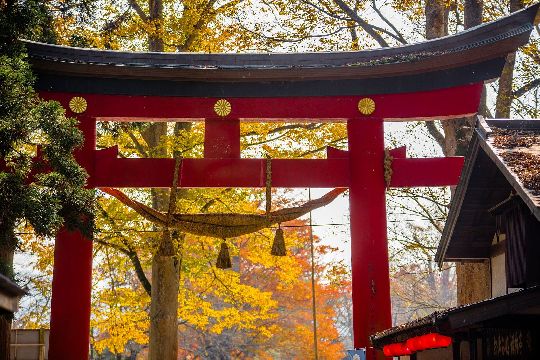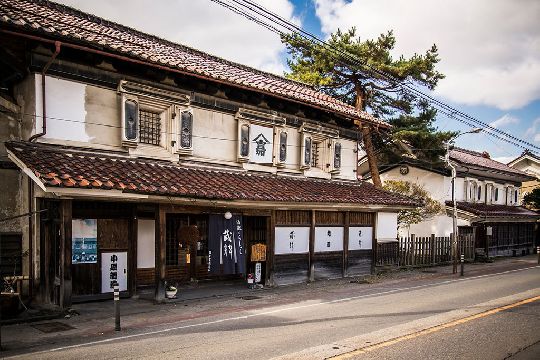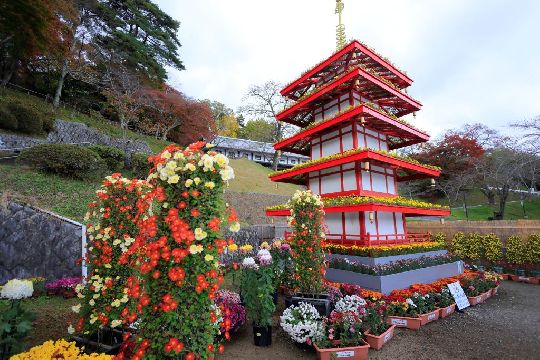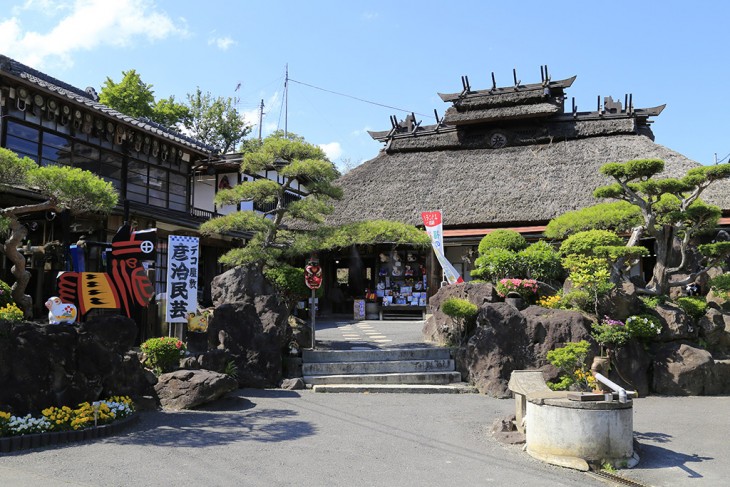
'Takashiba Dekoyashiki' is the name given to a group of 4 residences-turned-museums-and-shops that make traditional crafts in Takashiba District of Koriyama City.
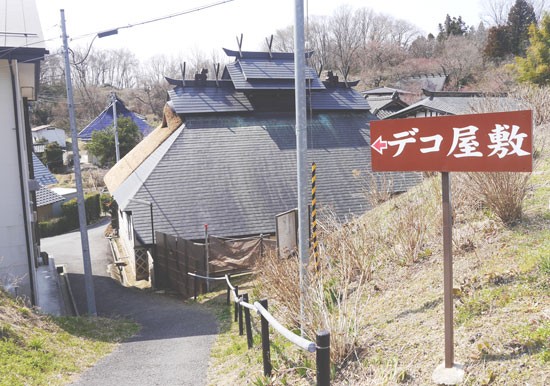
Each of these 4 residences is open for the public to come and visit most days (They are closed on Thursday though). The oldest residence is owned by a family who have continued to master their craft for the longest period of time, since the Edo Period. This residence is called 'Hiko Mingei'. The thatched roof of Hiko Mingei is hard to miss – the house is stunning, and dates back 400 years.

Usually at this point I’d start referring to the family who run Hiko Mingei by name, but every family living in Takashiba Dekoyashiki has the name 'Hashimoto', so differentiating by shop is the easiest way to describe them! I spoke to Daisuke san, the oldest son of the head craftsmen. Daisuke told me lots about the history of Takashiba Dekoyashiki, and spoke to me about what makes his family’s story a little different.
HISTORY OF THE AREA
During the Edo Period, farming families living in the Takashiba District were far from affluent, and each family owned just a small area of land. It was hard for the families to make ends meet, especially during the winter months when farming was impossible. So the families began making figurines and charms out of wood in the winter months. Japan has a history of using charms and dolls at local Buddhist and Shinto festivals for hundreds of years, so there was a growing need for their production. I asked if the family still owned a farm, and Daisuke’s father answered that a long time ago, the production of crafts had gradually become the main business, and that none of the families in this area were involved in commercial farming any more.
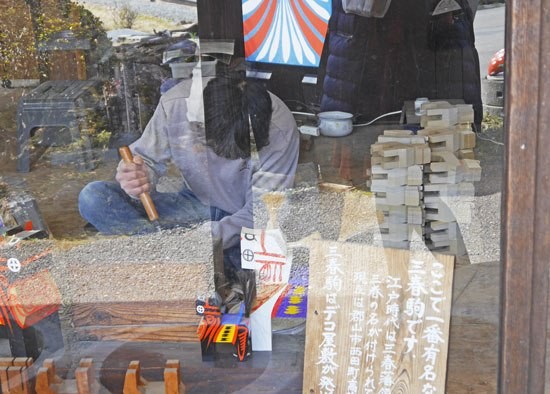
WHAT DOES TAKASHIBA DEKOYASHIKI MEAN?
As written above, 'Takashiba' is the name of the district where these residence are located. 'Yashiki' means 'Residence'. So that leaves 'Deko'.
'Deko' is an amalgamation of 2 words. The first is 'deku' 木偶, which means 'wooden figurine', and the second is 'Dogu' 土偶, which means 'dolls or figurines made out of earth'. The style of production at Takashiba Dekoyashiki gradually changed from being predominately wood-based to including 'earthen' materials necessary in techniques such as papier-mâché, and the name 'Dekoyashiki' reflects these changes.
TYPES OF CRAFTS
MIHARU-KOMA
The most famous craft originating in Takashiba District is the Miharu-koma wooden horse. This wooden horse is most commonly painted either black or white. Miharu-koma dolls were originally bought and exchanged as good luck charms used to pray for child-rearing.
The story of the Miharu-koma comes from 1200 years ago. According to legend, a shogun (coincidentally the same shogun who ordered the construction of the famous temple Kiyomizudera in Kyoto) headed north to conquer Miharu area. Before he left Kyoto, a priest gave him a small figurine of a horse as a good luck charm. This figurine was made from a left-over scrap of wood. He took this charm with him to Tohoku.
During battle, when it seemed like he was going to lose, the good luck charm he received from the priest turned into 100 real horses, which led to his clear victory in conquering the area. According to some stories, the original good luck charm horse was even found in Takashiba area! Since the Edo Period, horse figurines have been created and sold in Takashiba as charms to help children grow up big and strong. The black horse is supposed to represent children growing up strong, and the white horse represents longevity.
Takashiba District remained in Miharu Town until the end of the 19th century, when it became a part of Koriyama City. During the Edo Period, Miharu was famous for the talent of its people in taming and selling wild horses. Horses in this area grew super famous, and almost had their own brand – the Miharu-koma. Over the years, the very long name given to the wooden horse figurines created in Takashiba area became conflated with the name for the horses sold in Miharu Town, and the doll became known as Miharu-koma.

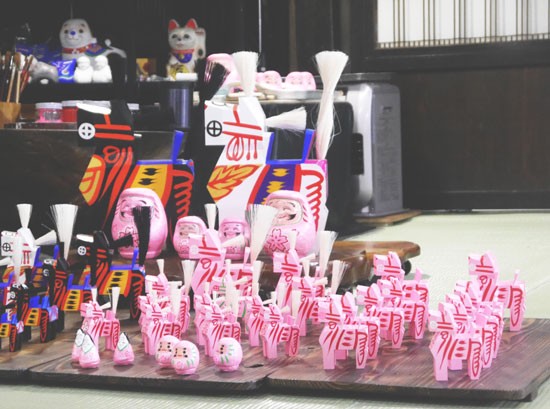
MIHARU DARUMA
When you think of Daruma dolls, you might think of Shirakawa Daruma or Takasaki Daruma. Both of these styles of daruma are famous for having no eyes at the time when the time of purchasing. I thought this was pretty standard across Japan, but apparently this practice occurs predominately in the Kanto region of Japan, and in fact daruma traditionally had their eyes painted in before being sold.
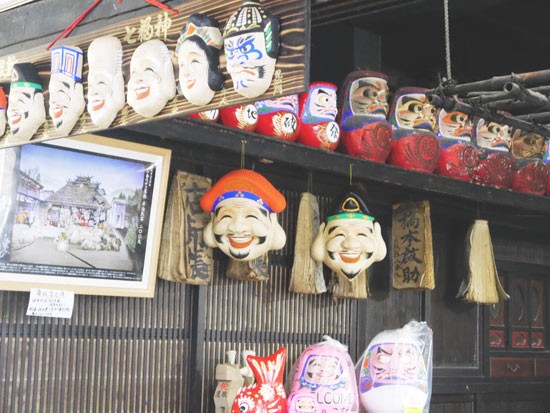
In Shirakawa and Takasaki, daruma are sold as 'goal setting dolls' or inspirational daruma, to held their owners focus on a task or goal they want to complete while they’re painting in the eye of one daruma, and then completing the other eye once they have successful achieved their goal.
However, the tradition of keeping daruma doll in your house started in the hopes of warding off evil spirits. The design of daruma is thought to be basd off of the image of a Buddhist monk meditating hard. Daruma dolls which are meant to scare off anything evil through their intense glare. That’s why they always look a bit anger!
Like Shirakawa City, Miharu Town holds a daruma market every year. Many people buy a replacement, or additional, daruma every year. Apparently it’s quite popular for people to buy a bigger size daruma every year! In this case that there are no bigger daruma, you would start once again buying and collecting daruma in the smallest size again from the next year.
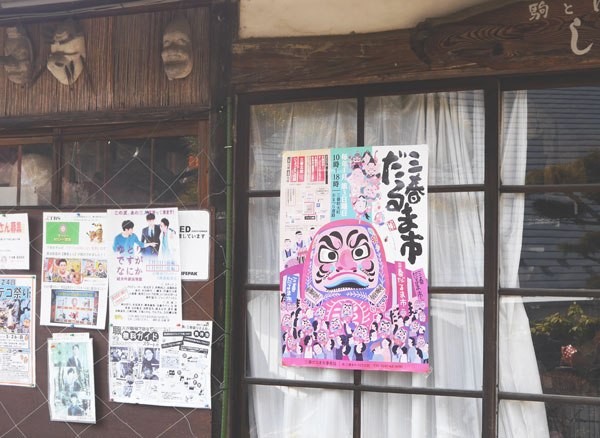
MASKS
While the Miharu-koma and Daruma are thought of as good luck charms which are only really effective for the year you buy them, there is one craft object made at Dekoyashiki can be enjoyed year after year!
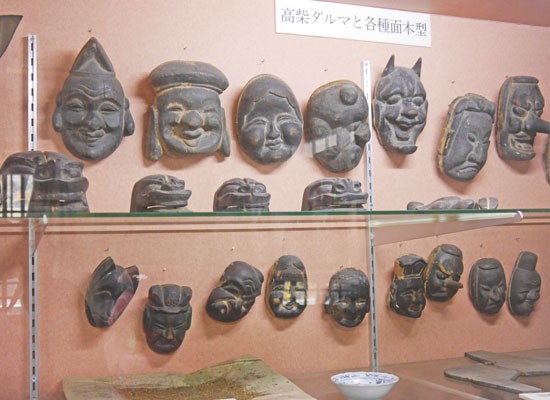
I’m referring to the papier-mâché masks made here for use at festivals at local shrines. The characters on these masks are usually a 'Hyottoko' (a cheeky young man), a woman, or one of 7 gods known as the Shichi-fuku-jin. This is a group of Buddhist gods.
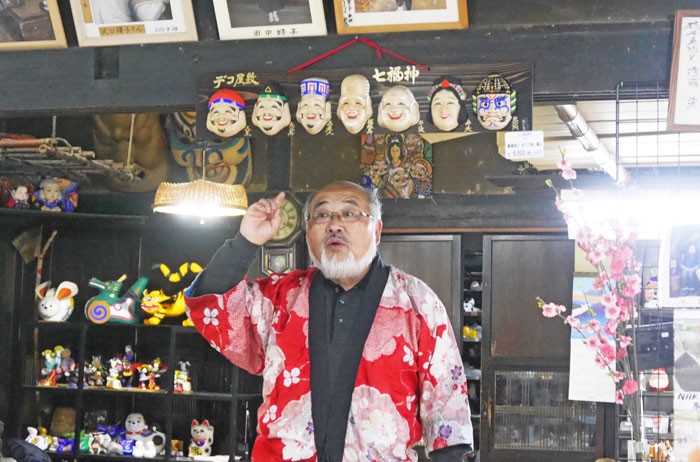
The Shichi-fuku-jin are all related to fishing, farming and agriculture. People in this area, like in many rural farming areas of Japan, used to find comfort in praying to the gods to ask for a good harvest in the year to come.
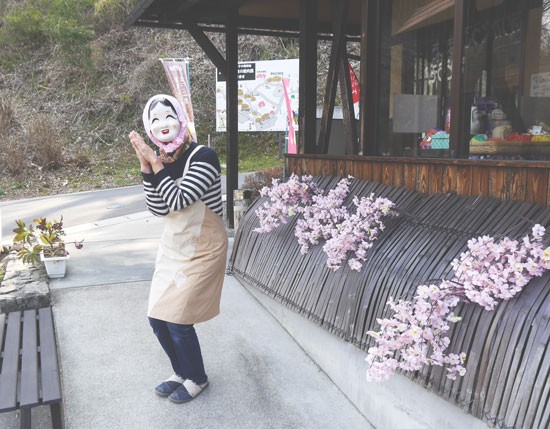
Before the introduction of Buddhism, Japanese people used to pray to shinto gods, which were usually closely connected to various aspects and elements of nature, and may not have a physical shape. With Buddhism came the ability to pray to 'gods' with human features, and entrust in them the ability to ensure or take away a good harvest as a way of explaining the natural phenomenons such as drought.
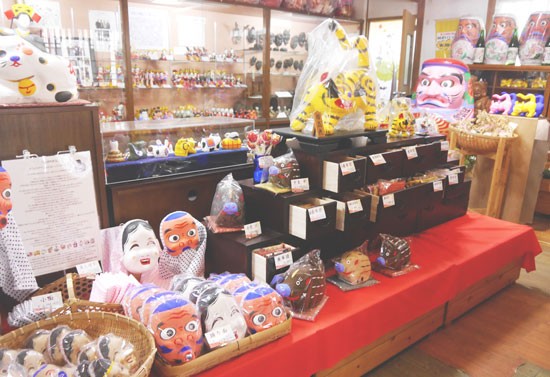
One of the ways in which the Shichi-fuku-jin were shown respect and praise was in the holding of dances at local festivals. Somebody would dress up as each of the 7 gods, 2 more people would play the Hyottoko and the woman, and a couple more would accompany the dancers with instruments. Local people would wear masks to get into character.
However, it is difficult to coordinate at least 10 people to get together for a dance, so the families of Takashiba Dekoyashiki only really hold a big dance once a year, and dances including just the Hyottoko are much more common. If you’re lucky, you might get a little glimpse of the Hyottoko dance when you visit the Dekoyashiki residences! (The owner of Hiroji Mingei is the resident expert!) I was lucky enough to have the head of Hiko Mingei perform the dance for me!
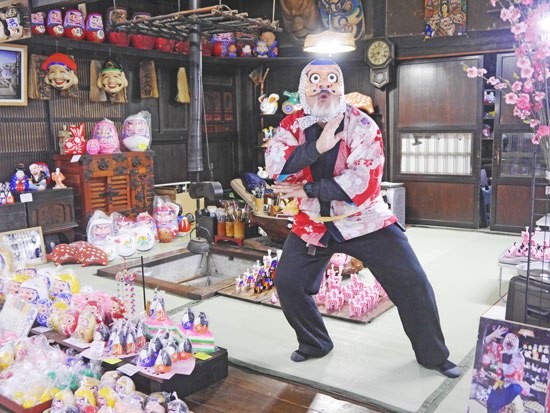
VISITING DEKOYASHIKI
- More information on visiting Takashiba Dekoyashiki.
- Below is a map featuring the locations of the different establishments.
